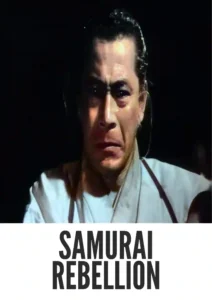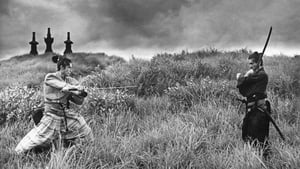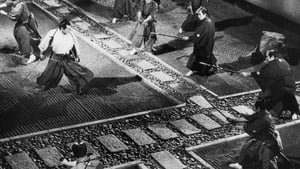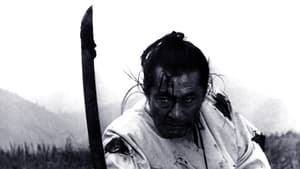Contact: info@alwanfilm.com
Video Sources 0 Views
- Watch trailer
- Samurai Rebellion


Synopsis
Table of Contents
ToggleReview: Samurai Rebellion 1967 Colorized – A Masterpiece of Japanese Cinema

Introduction
Samurai Rebellion 1967 stands as a testament to the enduring legacy of Japanese cinema and the unparalleled craftsmanship of director Masaki Kobayashi. In this article, we’ll explore the significance of this cinematic masterpiece, delving into its themes, performances, and lasting impact on the world of filmmaking.
Check The Full Colorized Movies List
Check Our Colorized Movies Trailer Channel
Understanding Samurai Rebellion: Director, Cast, and Genre
Directed by the visionary Masaki Kobayashi, Samurai Rebellion 1967 showcases his unparalleled ability to craft compelling narratives that resonate with audiences on a profound level. The film features a stellar cast, including Toshiro Mifune, whose commanding presence and nuanced performance anchor the story with depth and authenticity. Blending elements of drama, romance, and action, “Samurai Rebellion” (1967) transports viewers to feudal Japan, where honor and duty collide in a gripping tale of love and defiance.
Exploring the World of Samurai Rebellion 1967 Colorized: Plot and Characters
At its core, Samurai Rebellion 1967 follows the story of a retired samurai, portrayed by Toshiro Mifune, who defies the oppressive dictates of his feudal lord in order to protect his family and honor. As tensions escalate and loyalties are tested, the protagonist finds himself embroiled in a deadly struggle for justice and autonomy. Along the way, he encounters a cast of complex characters, each grappling with their own desires and dilemmas, as they navigate the treacherous landscape of feudal Japan.
The Art of Japanese Cinema
“Samurai Rebellion” (1967) exemplifies the artistry and craftsmanship of Japanese cinema, with its meticulous attention to detail, evocative cinematography, and haunting score. Through its richly textured imagery and immersive sound design, the film transports viewers to another time and place, inviting them to experience the beauty and brutality of feudal Japan with all its contradictions and complexities.
The Legacy of Masaki Kobayashi
Masaki Kobayashi’s influence extends far beyond Samurai Rebellion 1967, with a diverse body of work that continues to inspire and captivate audiences around the world. From “Harakiri” to “The Human Condition,” Kobayashi’s films are celebrated for their unflinching exploration of the human condition, their moral complexity, and their profound insight into the nature of power and authority. Through his groundbreaking work, Kobayashi has left an indelible imprint on the world of cinema, inspiring generations of filmmakers to push the boundaries of artistic expression and social commentary.
Themes Explored in Samurai Rebellion 1967 Colorized
Samurai Rebellion 1967 delves into a myriad of themes, from the nature of honor and duty to the inherent injustices of feudal society. Through its richly drawn characters and thought-provoking narrative, the film invites viewers to ponder the complexities of human relationships and the moral dilemmas that accompany them. As audiences immerse themselves in the world of “Samurai Rebellion” (1967), they are confronted with timeless questions about the nature of power, authority, and the individual’s responsibility to society.
Reception and Impact of Samurai Rebellion 1967 Colorized
Upon its release, Samurai Rebellion 1967 received widespread critical acclaim, with many praising its powerful performances, stunning cinematography, and thought-provoking narrative. The film’s unflinching portrayal of social injustice and its exploration of timeless themes struck a chord with audiences around the world, solidifying its status as a cinematic masterpiece. Over the years, “Samurai Rebellion” (1967) has continued to inspire filmmakers and cinephiles alike, earning its place as a cornerstone of Japanese cinema and a testament to the enduring power of storytelling.
Where to Watch Samurai Rebellion 1967 Colorized Online
For those eager to experience the timeless magic of Samurai Rebellion 1967 the film is readily available on popular streaming platforms such as Criterion Channel, Amazon Prime, and Hulu. Whether you’re a seasoned cinephile or a casual moviegoer, “Samurai Rebellion” (1967) promises to transport you to a world of honor, loyalty, and sacrifice, where the spirit of the samurai lives on in the hearts of its characters and the minds of its audience.
FAQs About Samurai Rebellion 1967 Colorized
Q: Is Samurai Rebellion 1967 based on a true story? A: No, “Samurai Rebellion” (1967) is a fictional tale crafted by screenwriter Shinobu Hashimoto, who drew inspiration from historical events and cultural traditions to create a gripping narrative that resonates with audiences to this day.
Q: Who are the main actors in Samurai Rebellion 1967? A: “Samurai Rebellion” (1967) features a stellar cast led by the legendary Toshiro Mifune, whose commanding presence and nuanced performance anchor the film with depth and authenticity.
Q: What awards did Samurai Rebellion 1967 win? A: While “Samurai Rebellion” (1967) did not win any major awards, it received critical acclaim for its powerful performances and poignant storytelling. The film’s impact on audiences and its enduring legacy in the realm of Japanese cinema far outweigh any accolades it may have received, solidifying its status as a timeless classic.
Q: Why is Samurai Rebellion 1967 considered a masterpiece of Japanese cinema? A: “Samurai Rebellion” (1967) is celebrated for its masterful storytelling, powerful performances, and profound exploration of themes such as honor, duty, and sacrifice. Director Masaki Kobayashi’s meticulous attention to detail and his ability to capture the essence of feudal Japan have earned the film widespread acclaim from critics and audiences alike, cementing its status as a masterpiece of Japanese cinema.
Q: What is the significance of Toshiro Mifune’s role in Samurai Rebellion 1967? A: Toshiro Mifune’s portrayal of the retired samurai, Isaburo Sasahara, is central to the film’s success. Mifune’s commanding presence and emotional depth bring the character to life, allowing audiences to empathize with his struggles and triumphs as he navigates the complexities of feudal society. Mifune’s performance is widely regarded as one of the highlights of his illustrious career, further elevating the stature of “Samurai Rebellion” (1967) in the pantheon of Japanese cinema.
Q: How does “Samurai Rebellion” (1967) explore the themes of honor and duty? A: “Samurai Rebellion” (1967) delves into the intricacies of honor and duty through the experiences of its characters, who are faced with moral dilemmas and conflicting loyalties. The film challenges traditional notions of honor and duty, questioning the role of the individual in upholding societal norms and highlighting the human cost of blind obedience to authority. Through its richly textured narrative and thought-provoking dialogue, “Samurai Rebellion” (1967) invites viewers to ponder the nature of honor and duty in a changing world.
Q: What is the significance of the film’s title, “Samurai Rebellion” (1967)? A: The title “Samurai Rebellion” (1967) reflects the central conflict of the film, which revolves around the rebellion of a retired samurai against the oppressive dictates of his feudal lord. The term “rebellion” evokes themes of defiance, resistance, and social upheaval, encapsulating the spirit of the film and its exploration of power dynamics in feudal Japan.
Conclusion
“Samurai Rebellion” (1967) stands as a towering achievement in the annals of Japanese cinema, a timeless masterpiece that continues to captivate audiences with its gripping narrative, powerful performances, and profound exploration of the human condition. Through its richly drawn characters and thought-provoking themes, the film invites viewers to reflect on the nature of honor, duty, and sacrifice, reminding us of the enduring power of storytelling to transcend time and culture.
As we revisit the world of “Samurai Rebellion” (1967), let us celebrate its legacy and pay tribute to the visionary artists who brought it to life. From director Masaki Kobayashi’s masterful direction to Toshiro Mifune’s unforgettable performance, the film stands as a testament to the talent and dedication of all those involved in its creation. Whether viewed for the first time or the hundredth, “Samurai Rebellion” (1967) continues to inspire, challenge, and move audiences around the world, a timeless masterpiece that will forever hold a place in the hearts of cinephiles everywhere.















